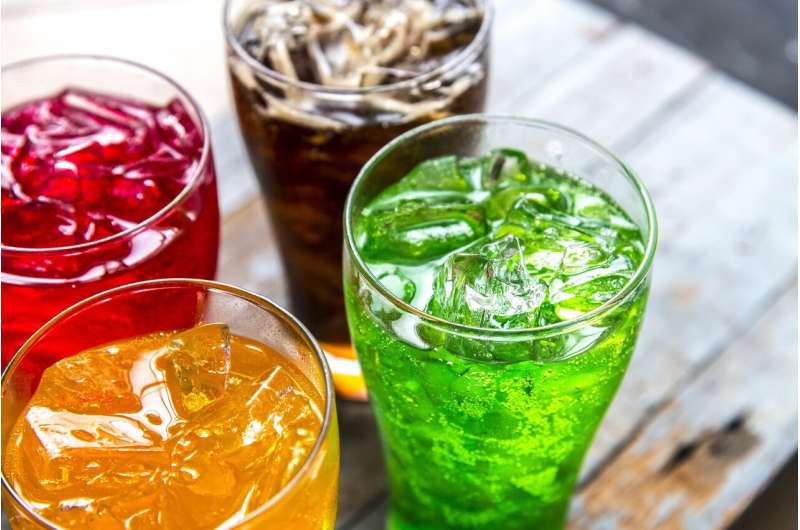This article has been reviewed according to Science X's editorial process and policies. Editors have highlighted the following attributes while ensuring the content's credibility:
fact-checked
trusted source
proofread
Study finds elevated levels of toxic metals in some mixed-fruit juices and soft drinks

A new study has found that some commonly consumed beverages contained levels of toxic metals that exceed federal drinking water standards.
Five of the 60 beverages tested contained levels of a toxic metal above federal drinking water standards, according to the study from Tulane University. Two mixed juices had levels of arsenic above the 10 microgram/liter standard. A cranberry juice, a mixed carrot and fruit juice and an oat milk each had levels of cadmium exceeding the 3 parts per billion standard.
The sampled beverages, which included those commonly found in grocery stores—single and mixed fruit juices, plant-based milks, sodas, and teas—were measured for 25 different toxic metals and trace elements. Mixed-fruit juices and plant-based milks (such as oat and almond) contained elevated concentrations of toxic metals more often than other drinks, according to the findings published in the Journal of Food Composition and Analysis.
All told, seven of the 25 elements exceeded drinking water standards in some of the drinks, including nickel, manganese, boron, cadmium, strontium, arsenic, and selenium. While lead was detected in more than 93% of the 60 samples, most contained very low levels, below 1 part per billion. The highest level (6.3 micrograms/kg) was found in a lime sports drink, though that's below both EPA and WHO standards for drinking water.
Tewodros Godebo, lead author and assistant professor of environmental health sciences at Tulane University School of Public Health and Tropical Medicine, said the study was important because there are few peer-reviewed studies examining the contents of American beverages.
"It was surprising that there aren't a lot of studies out there concerning toxic and essential elements in soft drinks in the United States," Godebo said. "This creates awareness that there needs to be more study."
These soft drinks are often consumed in smaller quantities than water, meaning the health risks for adults are most likely low. But Godebo said parents should be cautious about what drinks they offer their children.
"People should avoid giving infants and young children mixed-fruit juices or plant-based milks at high volume," Godebo said. "Arsenic, lead, and cadmium are known carcinogens and well established to cause internal organ damage and cognitive harm in children especially during early brain development."
Godebo said most of these elements found in beverages presumably come from contaminated soil.
"These metals are naturally occurring so it's hard to get rid of completely," Godebo said.
Hannah Stoner and Julia Ashmead, Tulane University students who participated in the study, said they hope the findings encourage people to think more about what they consume.
"I don't think there needs to be fear," Stoner said. "In toxicity, it's the dosage that often makes the difference so everything in moderation. But this creates awareness that there needs to be more study."
Godebo said the next step is to conduct a risk assessment based on the data collected to see the impacts of consuming toxic metals in children and adults.
"We are curious to keep exploring what's in our drinks and foods commercially sold to the consumers," Godebo said.
More information: Tewodros Rango Godebo et al, Toxic metals and essential elements contents in commercially available fruit juices and other non-alcoholic beverages from the United States, Journal of Food Composition and Analysis (2023). DOI: 10.1016/j.jfca.2023.105230


















